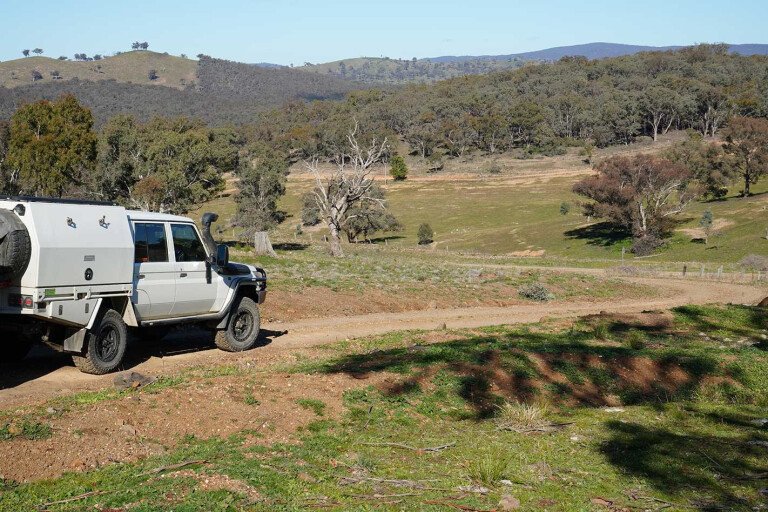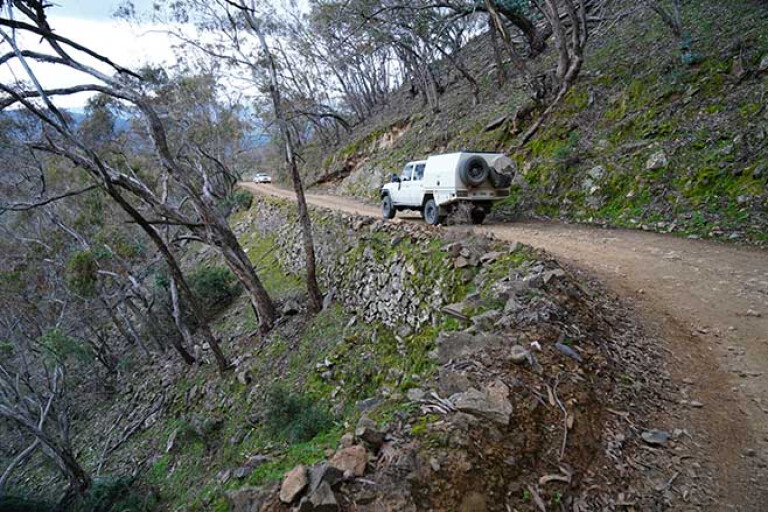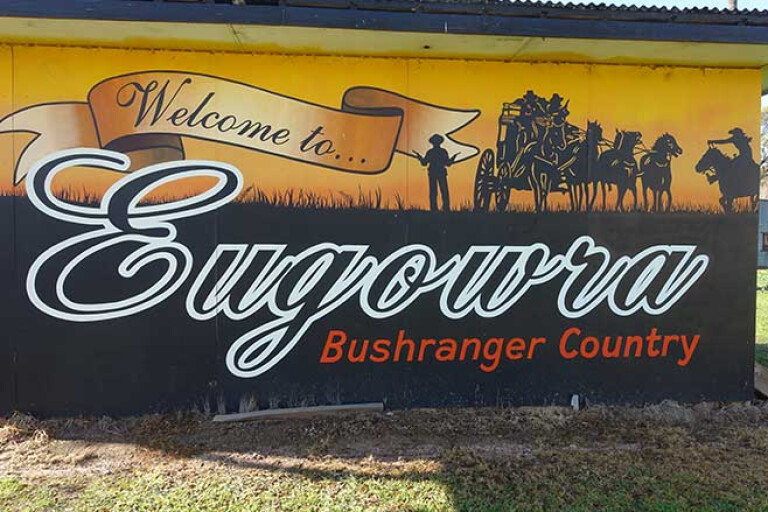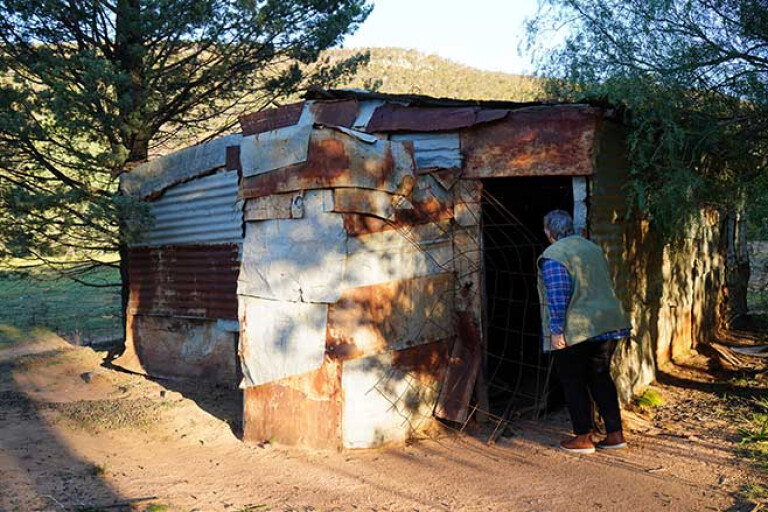
IT WAS the biggest gold robbery ever in Australian history.
In June 1862, a coach with a driver and four police escorts along with more than 2700 ounces (77kg) of gold and 3700 pounds in cash were on their way between Forbes and Orange, NSW, when Frank Gardiner and his gang of seven other bushrangers held the coach up, wounding two of the policemen in the process.
Helping themselves to the haul (the gold alone valued at over A$4.8 million today) the bushrangers fled but the police, along with black trackers, were soon on their tail. Surprised at their hideout the heavily laden horse with most of the gold was soon abandoned as the gang fled into the hills.

While most of the culprits were soon captured including Frank Gardiner, who, interestingly, after 10 years in gaol was exiled out of the colony and after a short time in Queensland fled to the USA where he lived till the age of 74, dying in 1904.
The others weren’t so lucky. Ben Hall, probably the most famous bushranger in NSW, ran the police ragged with his bold deeds throughout the colony till he was ambushed in his camp and shot, first in the back and then a further 30 odd times in May 1865, aged 27. John Gilbert, another member of the gold heist gang only survived another two weeks after Hall’s demise, being shot near Forbes at the age of just 23.
ESCORT ROCK
TODAY you can visit the place of the robbery now known as Escort Rock, which lies just off the main highway, east of the small, delightful village of Eugowra. Take the time to check out the many murals in the town, one of which, as you’d half expect, depicts the gold robbery.
At Escort Rock itself, which is well signposted, it’s a short walk from the carpark to where the infamous deed was carried out, while the old route of the stage coach and the ruts the passing traffic wore into the ground can still be seen near the rock.
The place where Ben Hall was shot can also be visited, some 15km northwest of Forbes. It’s a bit of a dog’s breakfast getting there though, as the route wanders through delightful farmland and light forest, turning this way and that along dirt roads before stopping near a non-descript patch of trees in an otherwise cleared paddock. Best to get a mud map from the local museum in Forbes which, by the way, is an excellent museum with a fabulous display on Ben Hall and his life.

A few cows looked on as we opened the creaky gate and walked the short distance to the copse of trees where a couple of signs testify that it was here that Ben Hall met his fate. The country doesn’t look anything like it did though when Ben threw down his swag and tethered his horse nearby. The surrounding country was heavily timbered back then and the police had plenty of cover to sneak up on him during the night. Called on to surrender Ben turned to run for his horse when the police opened fire; some say he was murdered!
We headed back to town and in the Forbes cemetery found his grave which is well tendered with flowers lying beside the headstone. As a couple of asides, just nearby is the grave of Kate Kelly, the sister of Ned Kelly, while the town itself has a magnificent central square with all the notable buildings lining its edge, much like a ‘Plaza Central’ in an old Spanish city.
BANG BANG HOTEL
EARLIER, we had come up through Young and stopped at the small township of Koorawatha where in 1864 old Ben and his gang, which included John Gilbert, arrived to have a bit of fun holding up the Bang Bang Hotel and its patrons for a few dollars and a cheap drink.
The trouble was there were a few policemen around and a furious gun battle ensured, the outlaws deciding to escape while the going was good. Today the site is marked by a couple of signs, the old hotel having succumbed to time and the odd fire or two.
From there we had wandered over to the Weddin Mountains NP and the surrounding state forest, which back in the day was a hideout for Ben and his men, a cave high in the steep, rocky hills overlooking the plains reputed to be his hideout and observation spot. Today, in this sea of semi-cleared farmland, the parks gives an indication of what the area was once like, and it is delightful country, dotted thickly with native pine, fuzzy box and red gum, while short green grass covered the ground in between.

The Ben Hall campground in the national park is well set-up and offers just a few campsites. We hadn’t booked so we wandered a short distance away into the state forest and found a spot to ourselves to enjoy the rich birdlife and the pleasant atmosphere.
On the east side of the range is the Holy Camp camping area and from each camping area radiate a number of walking trails for those so inclined. Not far from where we stopped for the night is the remains of Seaton’s Farm and this area is well worth a wander. This small farm of just 150 acres (60ha) backed by the red cliffs of Black Gin Gully was owned by Jim and Bertha Seaton from the 1940s through to the 1980s.
It was a tough land to make a living from and they only had a couple of hundred sheep with their biggest woolclip being a bale and a half. Today you can see how rough they lived, with their hand-built homestead and even handcrafted fencing, but with their milking cows, chooks and goats helping them get by, Bertha was often quoted as saying how much she loved living here. Jim died in 1983 and Bertha then sold the farm to the national parks before passing away in 2002.
OPHIR
AFTER our wandering around the Weddin Mountains and Forbes we headed to where all this gold fever had begun. Ophir, northeast of Orange. The site of Australia’s first payable gold discovery it was considered, until fairly recently, to have been discovered by Edward H Hargraves.
Certainly, that’s what we learnt in school and what the obelisk on the hill overlooking the Lewis Ponds Creek states. But it wasn’t as clear cut as that and controversy raged for years about the finding and while Hargreaves got the reward and refused to share it with his so-called partners, it has become apparent that Hargreaves was not much more than a con man.

Still, a gold rush set in and while the gold didn’t last long at Ophir and the prospectors quickly moved on, the scene was set and the history of Australia changed forever. Today the reserve surrounding the junction of Lewis Pond Creek and Summer Hill Creek is a top spot to visit with a number of camping spots to enjoy along the small, narrow waterways. We pulled up for a couple of nights near the junction and explored the surrounding area by vehicle and on foot.
There’s a few short walks to old mine sites, tunnels and the like while a brief drive up the winding dirt road will take you to the area’s first cemetery. There’s surprisingly few graves which is probably more of an indication of the areas short-lived prominence than of anything else, but the few remaining headstones do show a violent history with one, a Charles Corse, who was shot in 1872 after a savage argument with another local.
BATHURST
FROM Ophir there are a number of ways to find your way to the popular 4WD destination of Hill End and the Turon River. On forestry trails it’s a bit of a hodgepodge of tracks but we wanted to check up on ol’ Ben Hall’s exploits in Bathurst so we headed that way first. Ben and his gang had raided the town twice in October 1863, in some brazen attempts to embarrass the police, more than anything else, it seems.
They first robbed a jeweller’s shop before hiding in the Sportman’s Arms Hotel and having a few coldies while the police rushed around looking for them. Two days later they were back plundering a few pubs and their hapless patrons, while the police wandered this way and that, seemingly helpless to catch them. Their cheeky good luck deserted them in the end though.

Befitting a town with such a rich history, especially in mining and gold terms, Bathurst now hosts the Australian Fossil & Mineral Museum. This collection of some of the finest and most historic minerals, gemstones and incredible fossils you will find anywhere is the lifetime work of Warren Somerville.
This amazing collection, which was valued at more than $15 million, 20 years ago, was gifted to Bathurst and is now housed in a spectacular series of displays in the 1876 Public School building in the heart of the city. Being a bit of a dinosaur nut (who isn’t?) we were particularly interested in viewing the skeleton of ‘Rex’, the mighty Tyrannosaurus rex, which is probably the best rex skeleton in Australia. Originally discovered in Arizona where it roamed the swamps and forests some 70 to 65 million years ago, he (or she?) is amazing!
HILL END
FROM Bathurst and its history we headed to the once thriving gold town of Sofala and then took the main road to Hill End. Sadly, the old historic Bridle Trail that skirts close – sometimes too close – to the edge of the Macquarie River remains closed at Monaghans Bluff about 20km south of Hill End.
Wanting to be close to the centre of this famous town we settled on staying at the national park campground, a stone’s throw from the heart of the historic borough. Not your normally old gold mining town, Hill End with its wealth of notable old buildings and the extraordinary 3500 photos of the Holtermann Collection, that were rediscovered in the 1950s, shows what the town and area was like during its heady boom days around 1872. That was also when a German immigrant, Bernhardt Holtermann, discovered a single great hunk of reef gold weighing in at 286kg and containing 93kg of pure gold; it turned the sleepy little village into the biggest town in inland NSW.
Today it doesn’t matter what your particular bent is in life you’ll find something that will endear yourself to this place. While photographers and artists still flock here – it was made famous by such masters as Brett Whiteley, John Olsen and Russell Drysdale – those with a more adventurous or enquiring mind will revel in the tracks in the area that lead to interesting old mine sites, tumbled down smelters, deserted towns and poignant graveyards.

For fossickers there is a designated fossicking site just north of the town. Walkers on the other hand can enjoy an easy stroll around the town, a more interesting walk through Golden Gully or a longer stroll, with some great bird watching interspersed with old mine sites, stampers and the like around the 4km long Bald Hill Walking Trail.
For those who want to camp in a bit more isolation there are a heap of sites along the Macquarie River (both north and south of Monaghans Bluff) as well as at the Glendora Campground just outside town.
No matter what you do, you should always start your visit at the Hill End Heritage Centre and then take a short wander to the town’s old hospital with its display of mining equipment, Cobb & Co coach and historic farm machinery along with a pleasant barbecue area.
Of course, just across the road from the heritage centre is the one and only pub still standing (out of near 30), the Royal Hotel, built in 1872 and still serving a cold beer and a fine meal, so you mightn’t get far on your town wander.
We tore ourselves away from Hill End after three pleasant days exploring the town and surrounding area, but we’ll be back. Once you experience the region, you will return!
ESSENTIAL INFO
Weddin Mountains National Park requires a camping permit only booked on-line.
Forbes is about a five-hour drive from Sydney and among its many attractions it also has the impressive McFeeters Motor Museum.
Ophir, about 24km from Orange, and has an on-site booking station for those who want to bush camp in the reserve.
History nuts will get lost in Bathurst for days and while it has a somewhat famous motor racing circuit the town also features the National Motor Racing Museum.
Hill End, an easy two-hour drive from Bathurst, is a step back in time and extremely popular. Bookings for the camping grounds are essential.

COMMENTS